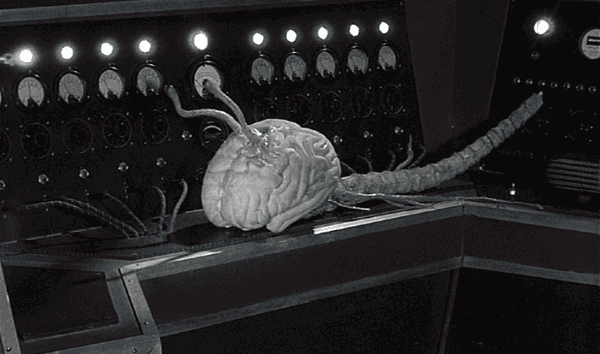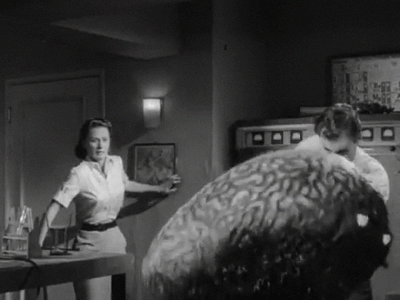 Just wait till Wednesday......................
Just wait till Wednesday......................
Posted on 05/04/2021 9:00:23 AM PDT by Red Badger
These findings may have implications for brain disease, disorders.
Scientists at the Krembil Brain Institute, part of University Health Network (UHN), in collaboration with colleagues at the Centre for Addiction and Mental Health (CAMH), have used precious and rare access to live human cortical tissue to identify functionally important features that make human neurons unique.
This experimental work is among the first of its kind on live human neurons and one of the largest studies of the diversity of human cortical pyramidal cells to date.
“The goal of this study was to understand what makes human brain cells ‘human,’ and how human neuron circuitry functions as it does,” says Dr. Taufik Valiante, neurosurgeon, scientist at the Krembil Brain Institute at UHN and co-senior author on the paper.
“In our study, we wanted to understand how human pyramidal cells, the major class of neurons in the neocortex, differ between the upper and bottom layers of the neocortex,” says Dr. Shreejoy Tripathy, a scientist with the Krembil Centre for Neuroinformatics at CAMH and co-senior author on this study.
“In particular, we wanted to understand how electrical features of these neurons might support different aspects of cross-layer communication and the generation of brain rhythms, which are known to be disrupted in brain diseases like epilepsy.”
With consent, the team used brain tissue immediately after it had been removed during routine surgery from the brains of patients with epilepsy and tumors. Using state-of-the-art techniques, the team was then able to characterize properties of individual cells within slices of this tissue, including visualizations of their detailed morphologies.
“Little is known about the shapes and electrical properties of living adult human neurons because of the rarity of obtaining living human brain tissue, as there are few opportunities other than epilepsy surgery to obtain such recordings,” says Dr. Valiante.
To keep the resected tissue alive, it is immediately transferred into the modified cerebrospinal fluid in the operating room then taken directly into the laboratory where it is prepared for experimental characterization.
It is rare to study human tissue because accessing human tissue for scientific inquiries requires a tight-knit multidisciplinary community, including patients willing to participate in the studies, ethicists ensuring patient rights and safety, neurosurgeons collecting and delivering samples, and neuroscientists with necessary research facilities to study these tissues.
After initial analysis, members of the Krembil Centre for Neuroinformatics used further large-scale data analysis to identify the properties that distinguished neurons in this cohort from each other. These properties were then compared to those from other centres doing similar work with human brain tissue samples, including the Allen Institute for Brain Sciences in Seattle, Washington.
Noted in the team’s findings:
A massive amount of diversity among human neocortical pyramidal cells
Distinct electrophysiological features between neurons located at different layers in the human neocortex
Specific features of deeper layer neurons enabling them to support aspects of across-layer communication and the generation of functionally important brain rhythms
The teams also found notable and unexpected differences between their findings and similar experiments in pre-clinical models, which Dr. Tripathy believes is likely reflective of the massive expansion of the human neocortex over mammalian and primate evolution.
“These results showcase the notable diversity of human cortical pyramidal neurons, differences between similarly classified human and pre-clinical neurons, and a plausible hypothesis for the generation of human cortical theta rhythms driven by deep layer neurons,” says Dr. Homeira Moradi Chameh, a scientific associate in Dr. Valiante’s laboratory at Krembil Brain Institute and lead author on the study.
In total, the team was able to characterize over 200 neurons from 61 patients, reflecting the largest dataset of its kind to-date and encapsulating almost a decade’s worth of painstaking work at UHN and the Krembil Brain Institute.
“This unique data set will allow us to build computational models of the distinctly human brain, which will be invaluable for the study of distinctly human neuropathologies,” says Dr. Scott Rich, a postdoctoral research fellow in Dr. Valiante’s laboratory at the Krembil Brain Institute and co-author on this work.
“For instance, the cellular properties driving many of the unique features identified in these neurons are known to be altered in certain types of epilepsy. By implementing these features in computational models, we can study how these alterations affect dynamics at the various spatial scales of the human brain related to epilepsy, and facilitate the translation of these ‘basic science’ findings back to the clinic and potentially into motivations for new avenues in epilepsy research.”
“This effort was only possible because of the very large and active epilepsy program at the Krembil Brain Institute at UHN, one of the largest programs of its kind in the world and the largest program of its kind in Canada,” says Dr. Valiante.
Reference: “Diversity amongst human cortical pyramidal neurons revealed via their sag currents and frequency preferences” by Homeira Moradi Chameh, Scott Rich, Lihua Wang, Fu-Der Chen, Liang Zhang, Peter L. Carlen, Shreejoy J. Tripathy and Taufik A. Valiante, 3 May 2021, Nature Communications. DOI: 10.1038/s41467-021-22741-9
You are posting some creepy threads today, lol.
 Just wait till Wednesday......................
Just wait till Wednesday......................


Mengele lives.




No democommies were harmed in these experiments.
Fiend Without A Face! Got it on DVD!

Resident Joe Biden was not harmed in these experiments. Mostly because he was nowhere near while they were being conducted.
Did they experiment what spike proteins do on the brain? Asking for a friend.
My favorite cheesy horror movie of all time!
They make you vote Democrat................

Isn’t there a risk that if you depend on abnormal brains (epileptics) for your study you may get abnormal results? How do they know that the structures they are studying are not the cause of the epilepsy that made the material available to study? Without normal controls it will be difficult to draw reliable conclusions.
Disclaimer: Opinions posted on Free Republic are those of the individual posters and do not necessarily represent the opinion of Free Republic or its management. All materials posted herein are protected by copyright law and the exemption for fair use of copyrighted works.